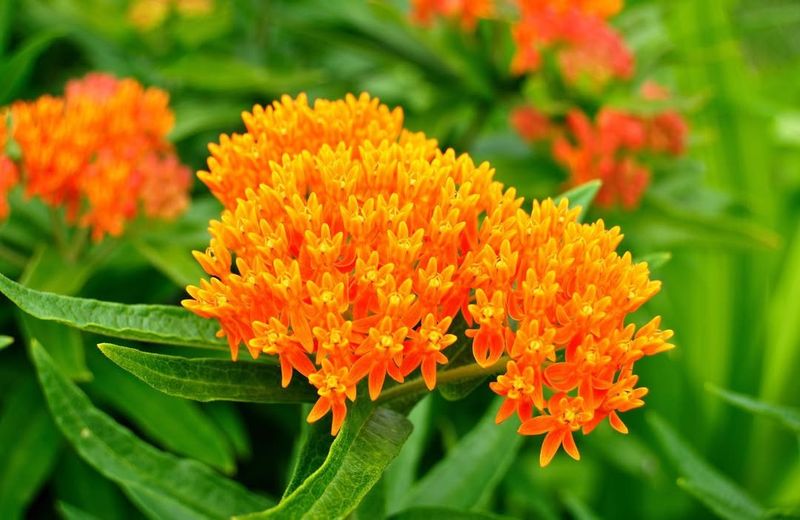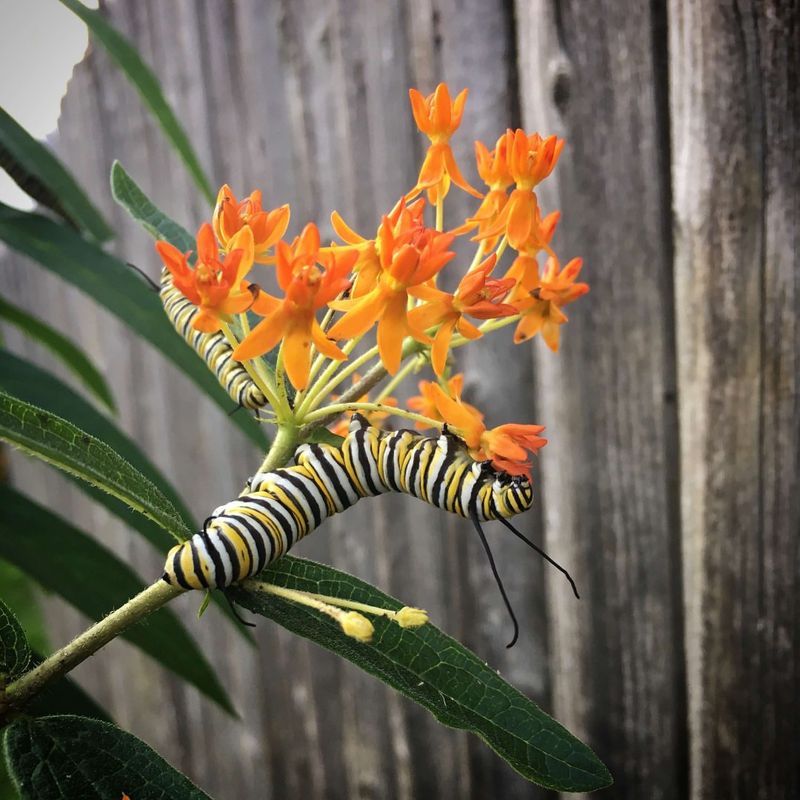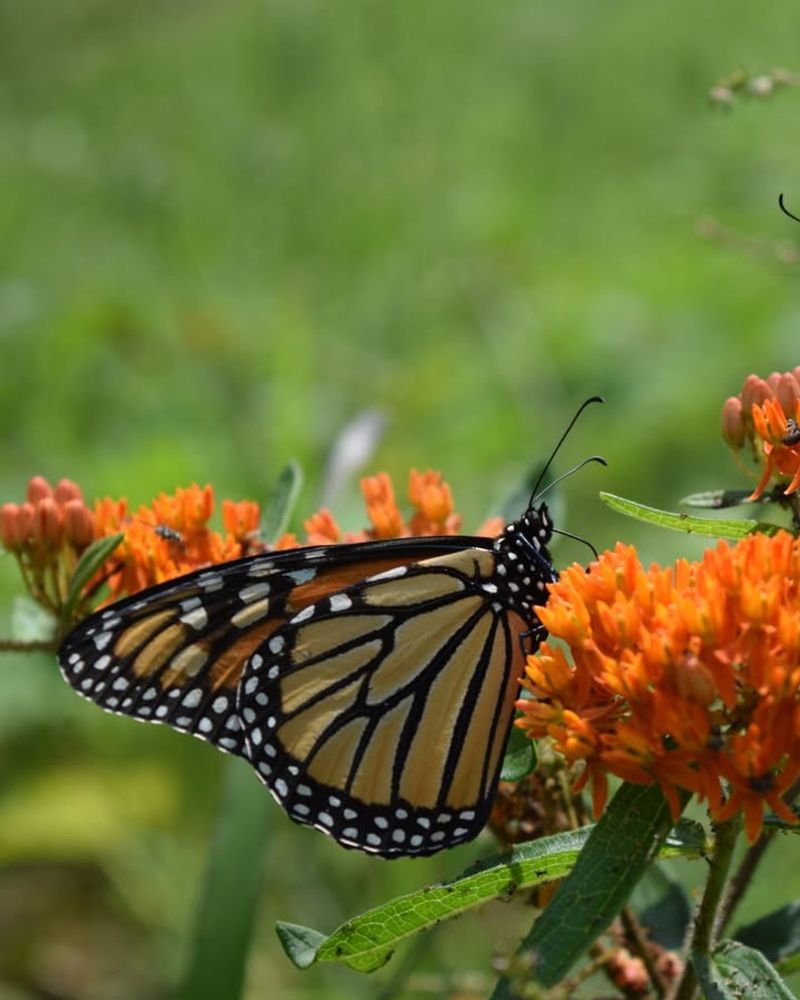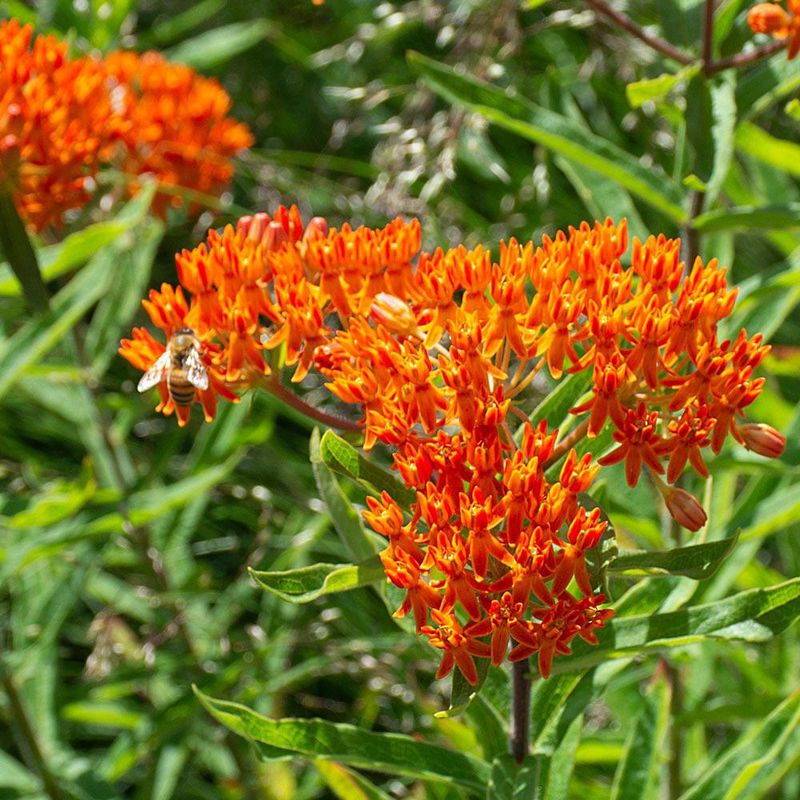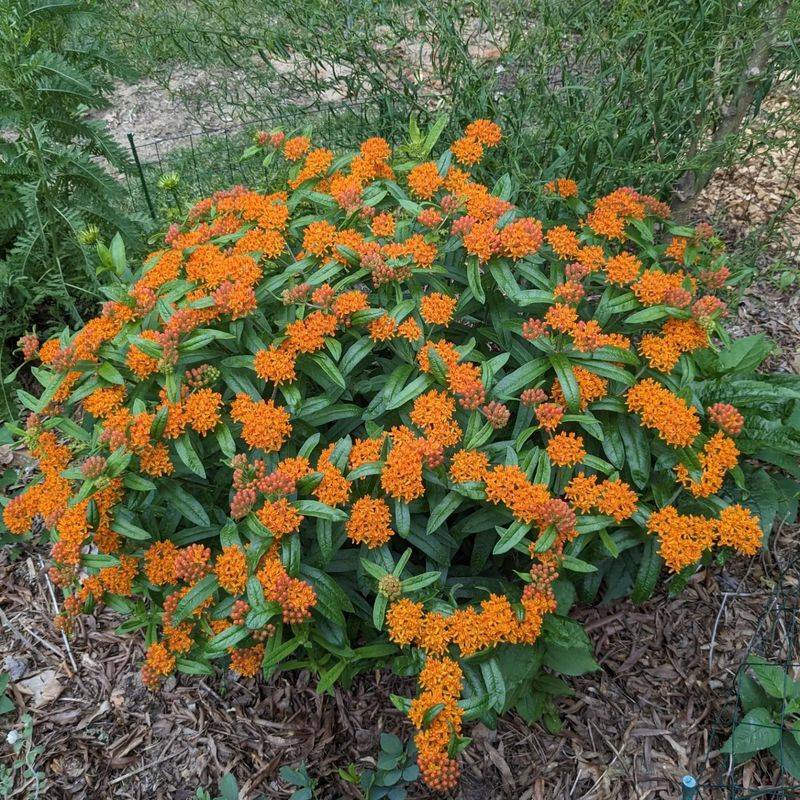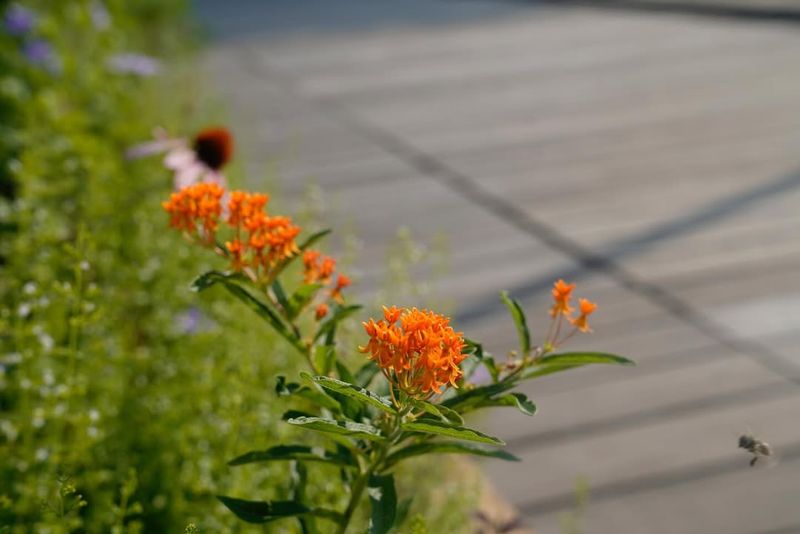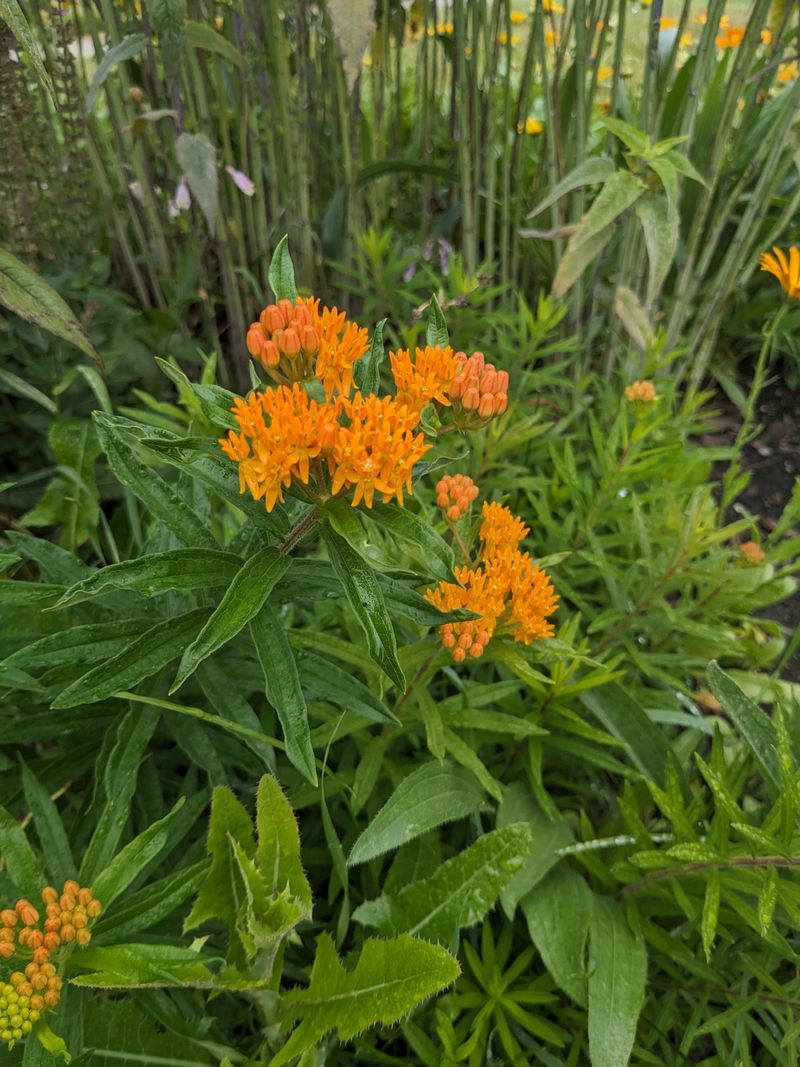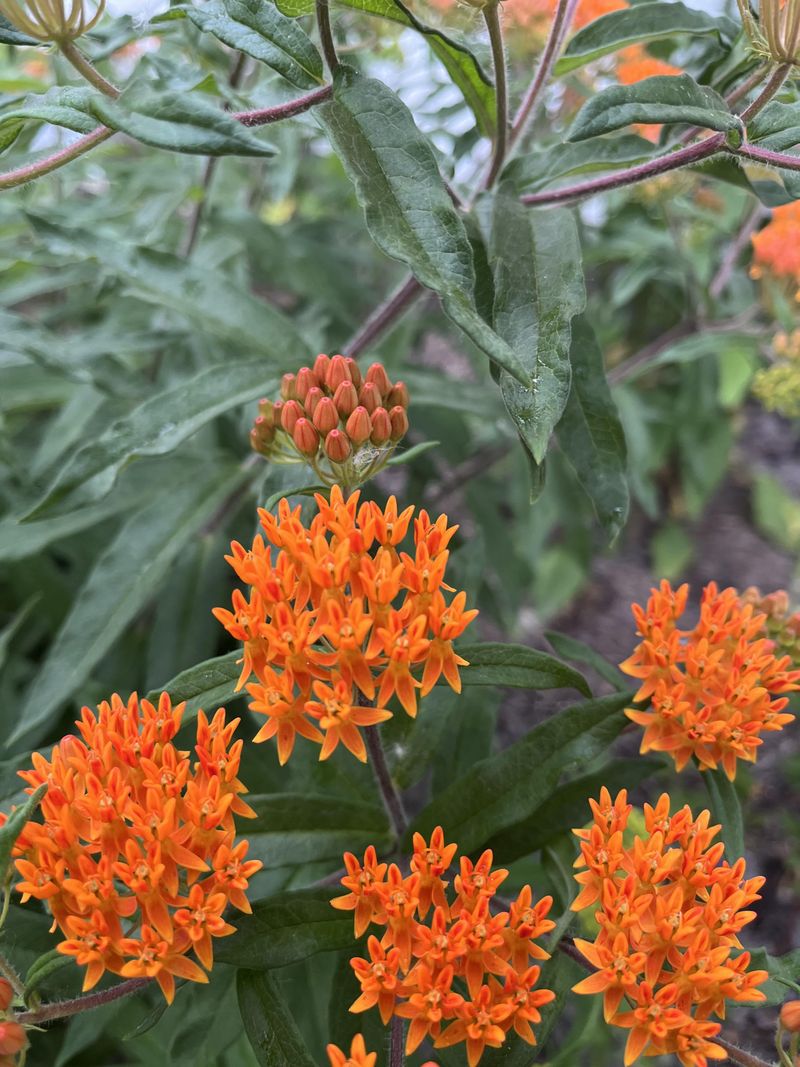If you want to see your North Carolina yard come alive with color and movement, Butterfly Milkweed is a must-have.
Its vibrant orange blooms are a magnet for butterflies, making every day feel like a little celebration. Planting it is surprisingly easy, and the results are instantly rewarding.
Add a few to your garden, and soon you’ll be surrounded by fluttering wings and cheerful energy.
1. Native Plant Powerhouse
Butterfly milkweed evolved right alongside North Carolina’s native wildlife, making it perfectly suited for local conditions. Unlike imported plants that struggle in regional soil and climate, this wildflower thrives without much fuss.
Gardens across the Tar Heel State benefit because native plants require less water and fertilizer than exotic species. Local insects and butterflies recognize these flowers immediately, drawn by their familiar scent and nectar.
When you plant native species, you’re essentially rolling out the welcome mat for creatures that have lived here for thousands of years.
2. Monarch Butterfly Nursery
Monarch butterflies depend entirely on milkweed species to raise their young, and butterfly milkweed serves as the perfect nursery. Female monarchs lay their tiny eggs exclusively on milkweed leaves because caterpillars can only eat this plant.
North Carolina sits along important monarch migration routes, making your yard a crucial rest stop. Without milkweed, these iconic orange-and-black butterflies would disappear from our landscapes forever.
By planting just a few of these flowers, you become part of a conservation effort that spans the entire continent.
3. Brilliant Orange Blooms
Few plants can match the eye-catching brilliance of butterfly milkweed’s orange flowers. These fiery blooms appear in dense clusters throughout summer, creating stunning focal points in any garden design.
Gardeners in North Carolina appreciate how the bright color contrasts beautifully with green lawns and darker shrubs. The flowers don’t fade quickly in hot sun either, maintaining their intensity for weeks.
Whether you plant them in borders, wildflower meadows, or container gardens, these orange beauties always steal the show and make neighbors stop to admire your yard.
4. Drought-Tolerant Champion
Summer droughts happen regularly across North Carolina, but butterfly milkweed handles dry spells like a champion. Deep taproots reach far underground to find moisture that other plants can’t access.
Once established, these plants rarely need watering, even during the hottest months. This makes them perfect for busy gardeners who don’t have time for constant maintenance.
Water bills stay lower when you fill your yard with drought-tolerant natives. Your butterflies still get plenty of nectar, and you save money while helping the environment at the same time.
5. Pollinator Buffet Table
Butterflies aren’t the only creatures that flock to butterfly milkweed—bees, hummingbirds, and beneficial insects all visit these flowers. Each bloom produces abundant nectar that fuels pollinators throughout their busy days.
North Carolina yards become lively ecosystems when filled with pollinator-friendly plants. You’ll notice increased activity as different species take turns visiting the flowers from dawn until dusk.
Supporting pollinators helps your vegetable garden produce better too, since these creatures carry pollen between plants. Everyone wins when you create a buffet that attracts nature’s hardest workers.
6. Low-Maintenance Beauty
Forget about spending every weekend fussing over finicky flowers—butterfly milkweed practically takes care of itself. After the first growing season, these plants need minimal attention from gardeners.
They don’t require deadheading, special fertilizers, or constant pruning to look their best. North Carolina’s natural rainfall usually provides enough moisture once roots establish themselves.
Pests and diseases rarely bother this tough native plant either. Spending less time on garden chores means more time actually enjoying the butterflies and wildlife that your yard attracts throughout the warm months.
7. Year-Round Visual Interest
Even after flowers fade, butterfly milkweed continues providing visual interest through changing seasons. Seedpods develop in late summer, creating attractive architectural elements with their distinctive pointed shape.
When pods split open in fall, silky seeds float away on the breeze like tiny parachutes. North Carolina gardeners enjoy watching this natural spectacle while knowing new plants might sprout nearby.
Winter foliage dies back completely, but knowing what’s coming in spring makes the wait worthwhile. From first green shoots to final seed dispersal, this plant offers something beautiful throughout the year.
8. Supports Complete Butterfly Life Cycle
Watching the complete butterfly life cycle unfold in your own backyard feels almost magical. Butterfly milkweed supports every stage, from tiny eggs to hungry caterpillars to adult butterflies sipping nectar.
Kids in North Carolina especially love discovering striped monarch caterpillars munching on leaves. Observing chrysalises attached to stems teaches valuable lessons about nature and transformation.
When adult butterflies finally emerge and take flight, everyone feels connected to something bigger. Your yard becomes an outdoor classroom where wildlife education happens naturally, creating memories that last forever.
9. Deer-Resistant Garden Solution
Deer love munching on garden plants, but they typically avoid butterfly milkweed because of its bitter-tasting sap. This natural defense mechanism keeps your flowers safe while still attracting butterflies.
North Carolina homeowners dealing with deer damage appreciate having beautiful blooms that survive browsing pressure. You won’t wake up to find your entire planting eaten overnight.
The milky sap contains compounds that taste unpleasant to mammals but don’t harm butterflies or their caterpillars. Finally, you can have gorgeous flowers and visiting butterflies without building tall fences around everything.
10. Easy Propagation and Sharing
Butterfly milkweed produces abundant seeds that make sharing with friends and neighbors incredibly easy. Collect dried pods in fall, store seeds in paper envelopes, and distribute them throughout your community.
Starting new plants from seed costs almost nothing while spreading butterfly habitat across North Carolina. Seeds germinate readily when planted in spring after a cold period.
You can also divide established clumps carefully, though this works better with younger plants. Creating a neighborhood full of butterfly havens happens naturally when everyone shares seeds and knowledge about these remarkable native wildflowers.


